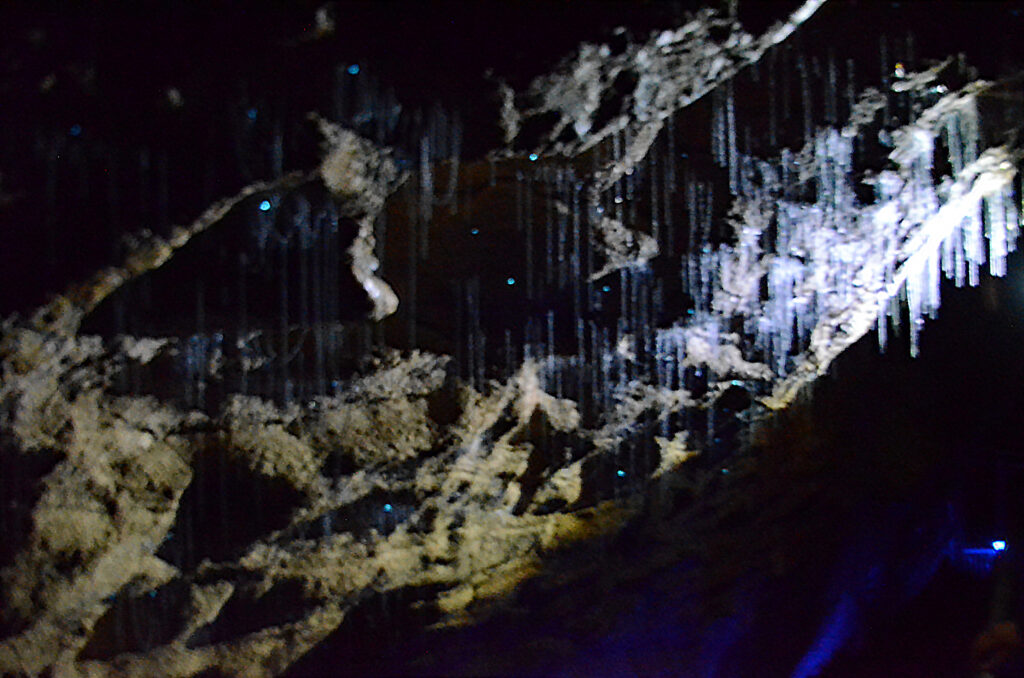Imagine stepping into a world where the ceiling above your head is a mesmerizing display of twinkling blue lights, akin to a starry night sky. This is not a scene from a fantasy novel but a reality hidden within the depths of the Waitomo Caves in New Zealand. Home to thousands of glowworms, these caves offer a magical spectacle that captivates both the young and old. But what exactly makes these tiny creatures glow, and how do they transform the dark caverns into a celestial wonderland? Let’s embark on a journey to uncover the secrets behind the enchanting glowworm caves of Waitomo.
The Enchanting World of Waitomo Caves
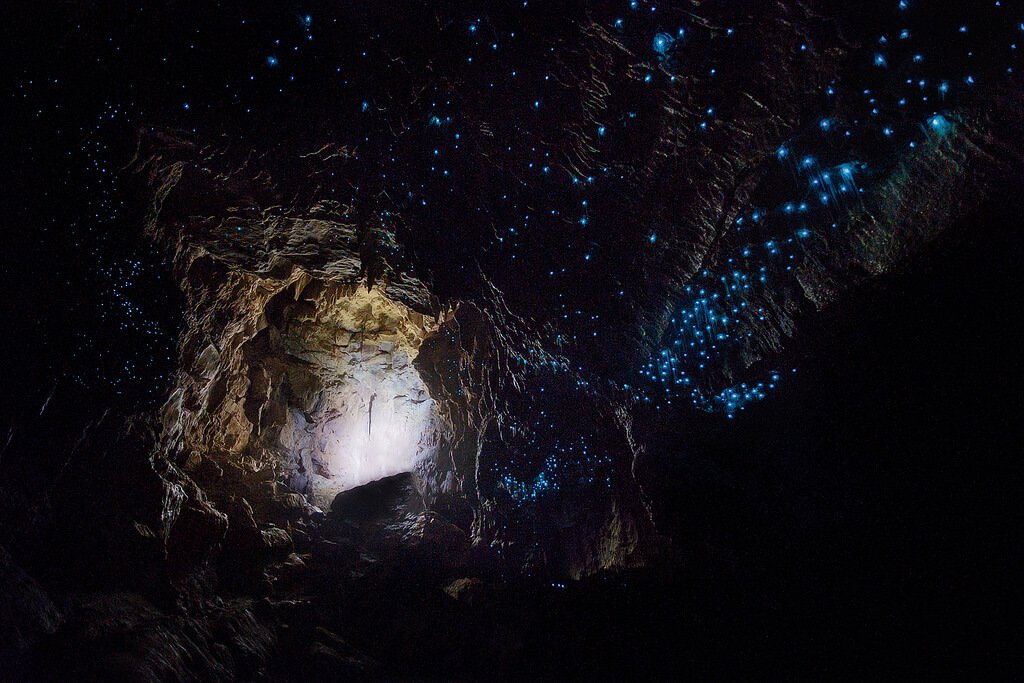
Nestled in the heart of New Zealand’s North Island, the Waitomo Caves are a natural marvel that attracts thousands of visitors each year. These caves, formed over millions of years, have become famous for their unique luminescent inhabitants. As you drift silently on a boat through the caves, the ceiling above you glows with the light of countless glowworms, creating an ethereal atmosphere. This phenomenon is not just a visual delight but also a testament to the wonders of nature and its ability to surprise and inspire.
Meet the Glowworms: Arachnocampa Luminosa
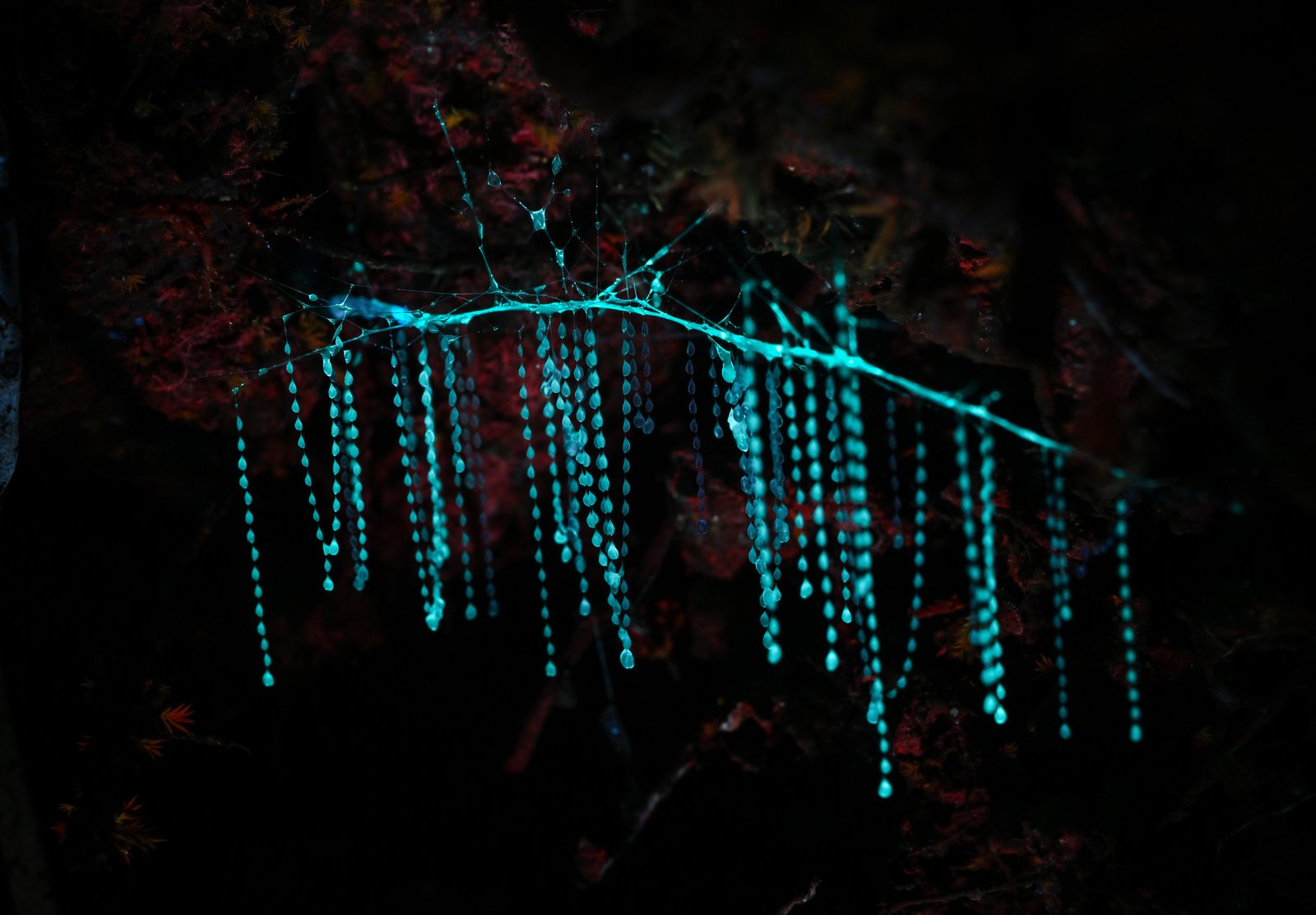
The star performers of this underground spectacle are the Arachnocampa luminosa, a species of glowworm native to New Zealand. Despite their name, glowworms are not worms at all; they are actually the larval stage of a type of fly. These tiny creatures use bioluminescence to attract prey, emitting a soft blue-green light from their bodies. The glow is produced through a chemical reaction involving luciferin, an enzyme that, when combined with oxygen, creates light without heat. This remarkable adaptation allows the glowworms to thrive in the darkness of the caves.
The Science Behind the Glow
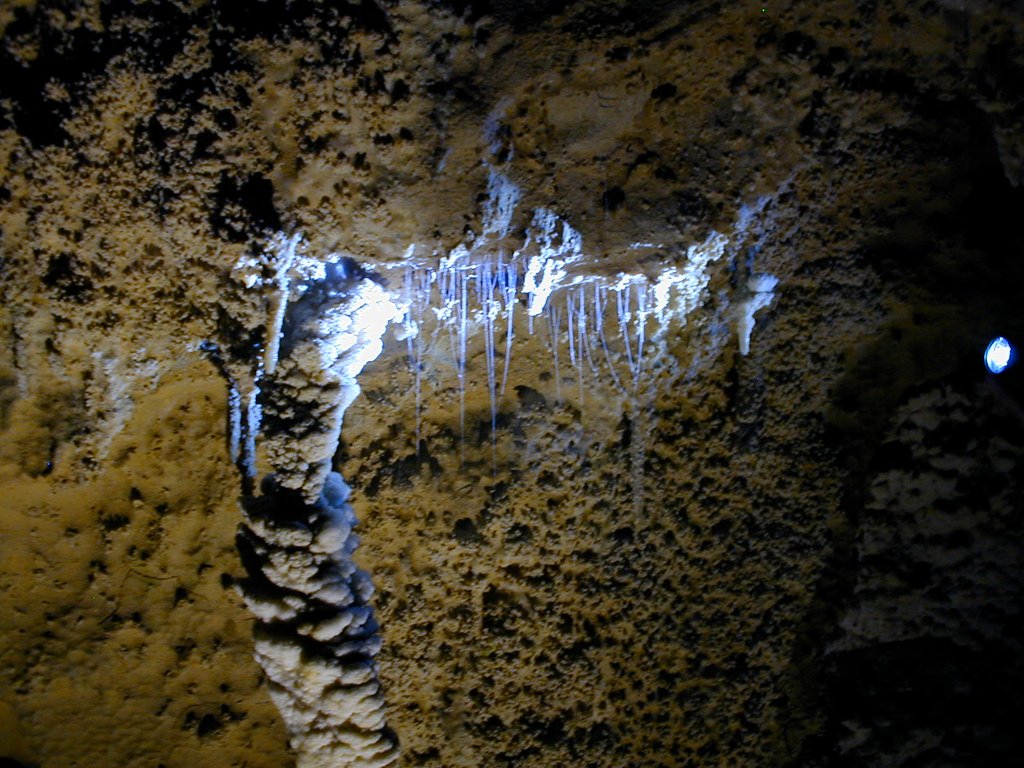
Bioluminescence, the ability of living organisms to produce light, is a fascinating natural phenomenon. In the case of the c, the light is generated in a specialized organ located in their tails. This light serves a dual purpose: it lures unsuspecting insects into sticky silk threads spun by the glowworms, and it also deters predators by making the glowworms appear larger and more intimidating. The light’s intensity and color can be adjusted by the glowworms, making them masters of their nocturnal environment.
The Role of the Caves in Glowworm Survival
The unique environment of the Waitomo Caves plays a crucial role in the survival of the glowworms. The caves provide the perfect conditions of humidity, temperature, and darkness needed for the glowworms to thrive. The limestone formations within the caves also offer numerous crevices and surfaces for the glowworms to attach their silk threads. This symbiotic relationship between the caves and their glowing inhabitants showcases the delicate balance of ecosystems and the importance of preserving such natural wonders.
Witnessing the Glow: A Visitor’s Experience
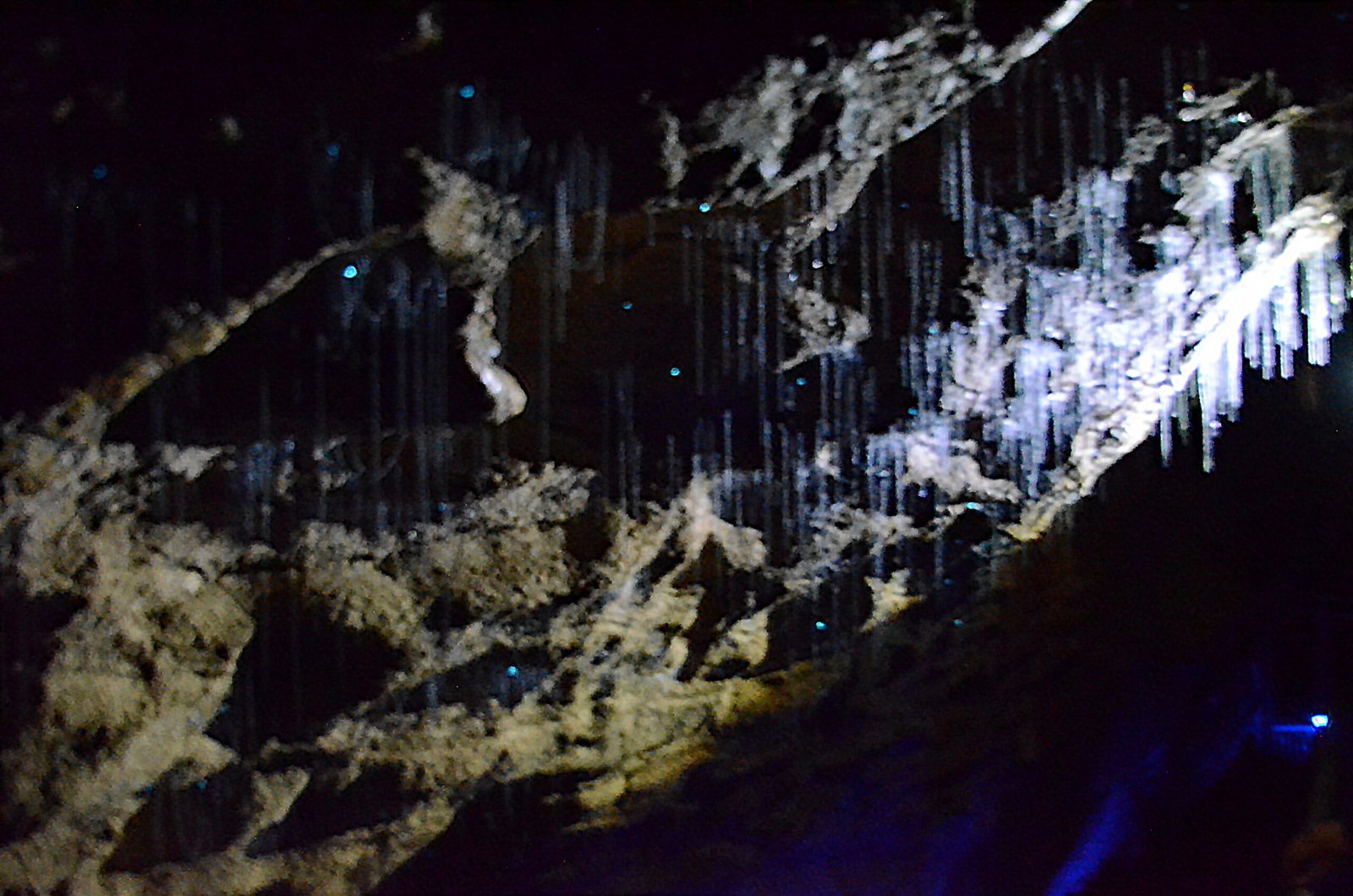
For those lucky enough to visit the Waitomo Caves, the experience is nothing short of magical. As you enter the caves, you are enveloped in complete darkness, with only the gentle hum of the river guiding you. Suddenly, the ceiling comes alive with thousands of glowing dots, creating an illusion of a starry night. It’s a serene and humbling experience, one that reminds us of the beauty and mystery of the natural world. Visitors often leave the caves with a renewed appreciation for nature and a deeper understanding of the interconnectedness of life.
Conservation Efforts: Protecting the Glow

With the increasing popularity of the Waitomo Caves, conservation efforts have become paramount to ensure the protection of the glowworms and their habitat. Local authorities and conservationists work tirelessly to maintain the delicate balance of the cave ecosystem. Measures such as limiting visitor numbers, controlling lighting within the caves, and monitoring water quality are implemented to safeguard this natural treasure. These efforts highlight the importance of sustainable tourism and the responsibility of humans to protect the wonders of our planet.
A Glimpse into the Past: The Formation of the Caves
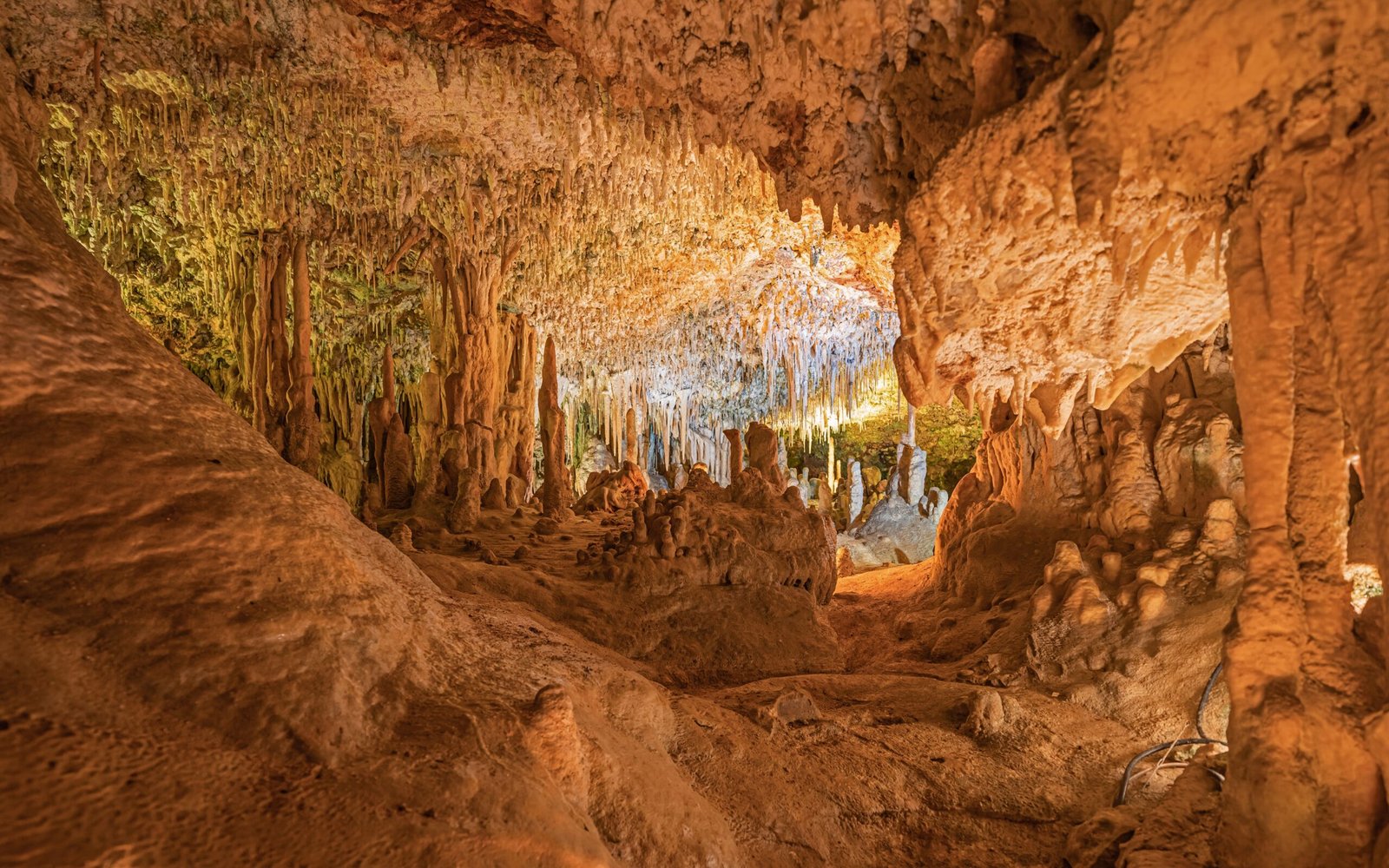
The Waitomo Caves themselves are a geological marvel, formed over millions of years through the gradual erosion of limestone by water. This process has created intricate formations of stalactites and stalagmites, adding to the caves’ allure. The caves’ formation is a testament to the power of natural forces and the passage of time, offering a glimpse into Earth’s history. For many visitors, the caves are not only a visual spectacle but also a reminder of the planet’s ever-changing landscape.
The Cultural Significance of Waitomo Caves

For the indigenous Maori people, the Waitomo Caves hold cultural and spiritual significance. The name Waitomo itself is derived from the Maori words “wai” (water) and “tomo” (hole), reflecting the caves’ watery origins. The Maori have long revered the glowworms as sacred beings, and the caves are considered a place of deep spiritual connection. This cultural heritage adds another layer of richness to the Waitomo experience, reminding visitors of the deep bond between people and the land.
Planning Your Visit: What to Expect
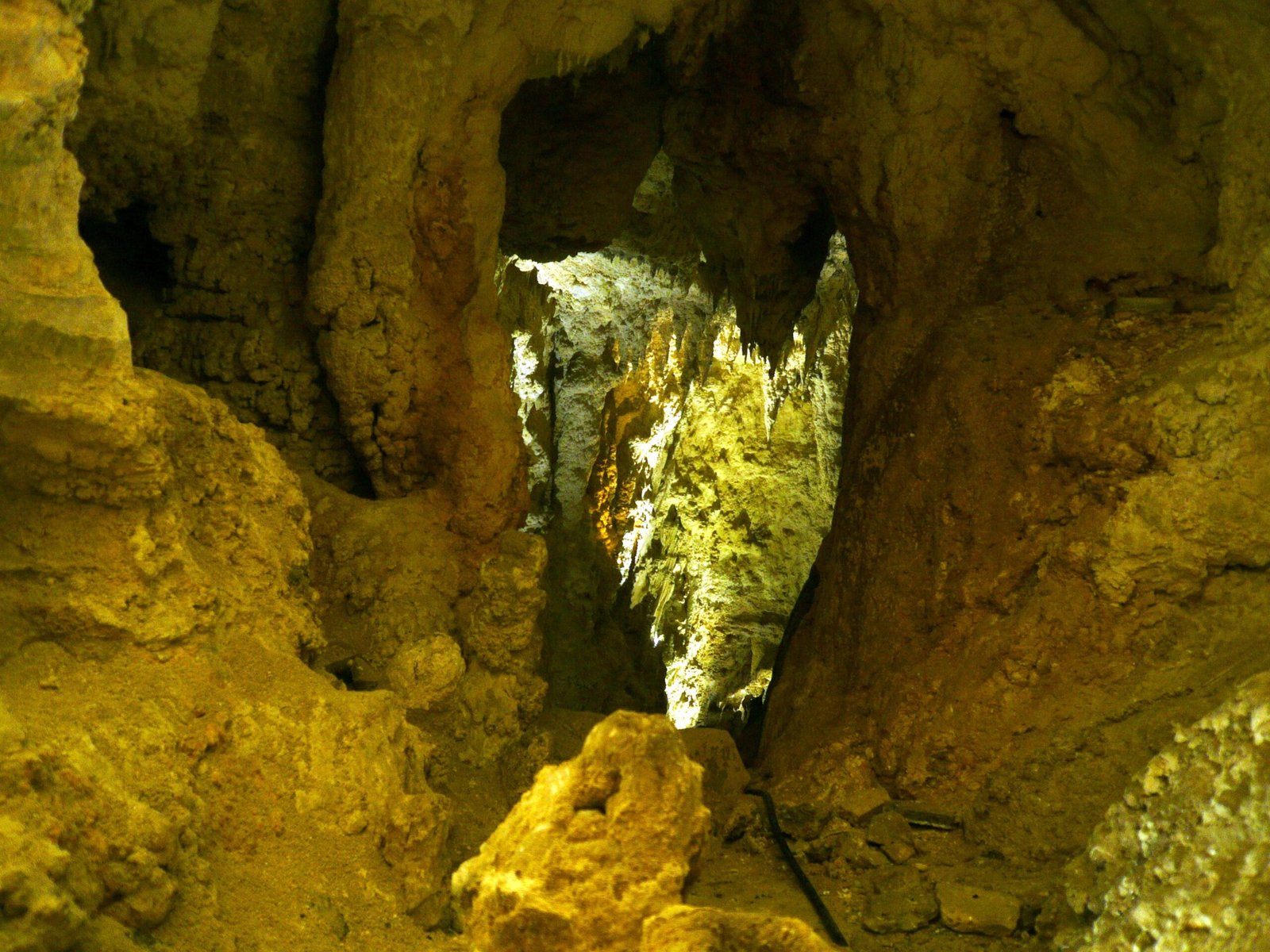
For those planning a visit to the Waitomo Caves, preparation is key to making the most of this unforgettable experience. Guided tours are available, offering insights into the history and science of the caves and their glowing inhabitants. It’s recommended to wear comfortable clothing and sturdy shoes, as the cave environment can be damp and uneven. Photography is generally not allowed inside the caves to preserve the glowworms’ natural habitat, so visitors are encouraged to simply immerse themselves in the moment and let the experience leave a lasting impression.
Reflecting on Nature’s Wonders
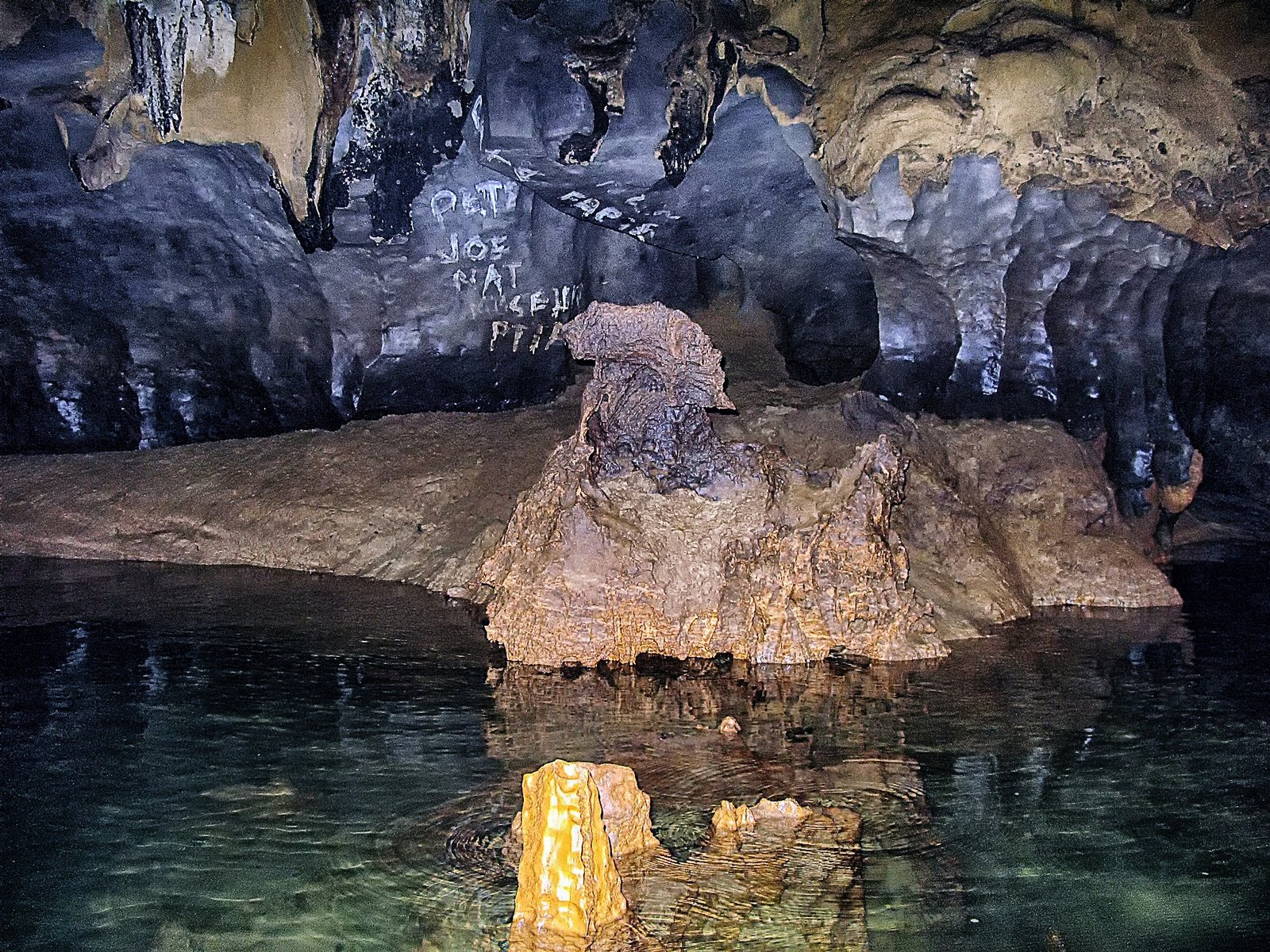
The glowworm caves of Waitomo are a reminder of the incredible diversity and beauty of our natural world. They inspire awe and wonder, leaving visitors with a sense of humility and a renewed appreciation for the planet’s wonders. As we marvel at the glowworms’ delicate light, we are reminded of the importance of preserving such natural treasures for future generations. The Waitomo Caves stand as a testament to the magic that can be found in the most unexpected places, urging us to explore, protect, and cherish the world around us.

